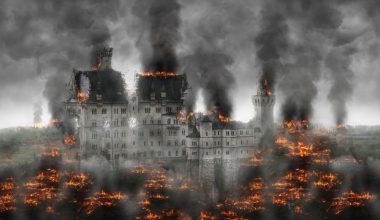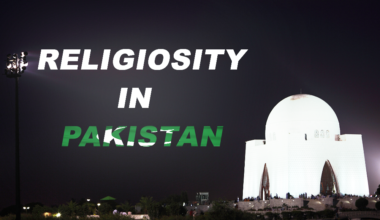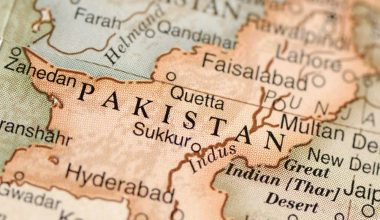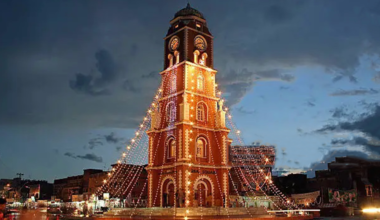PROLOGUE: This article attempts to examine the rise of sectarian conflict in Pakistan and how it has assumed genocidal proportions in the extermination of Shias in the country. The attempts to Islamize the state after 1947 reached a high point of social transformation in 1980’s on the heady mix of Islamization and Jihad.
The militias were armed and implanted in the civil fabric, as the state decided to dole out a part of its sovereignty to them. The sectarianism, nurtured and spurred by internal and external stimuli has now crystallized into a systematic cleansing of Shias in the country.
——————-
While Muslims have always been divided in sects, sectarianism in Pakistan has assumed uniquely violent proportions, setting it apart from most other Muslim societies. Tens of thousands of lives have been lost in the past three decades and the mayhem continues to exacerbate. The genesis and evolution of violent sectarianism in Pakistan is rooted in the politicization and militarization of sectarian groups both by national and international actors. The British Raj in India had papered over the Sunni-Shia divide by: one, eliminating the confrontation between the sets during its tenure, two, rejecting the jurisprudence of ‘takfir’ (apostatisation), and three, by enacting a competent Muslim Family Law accommodating both sects. Hence, Pakistan inherited an amiable sectarian atmosphere from the Raj, but the politicians and the establishment started using the religion for their agenda. The situation worsened after the separation of Bangladesh -the more secular, better educated, and less feudal of the two wings of Pakistan- and led to the apostatisation of Ahmedis by Pakistan on Zulfiqar Ali Bhutto’s watch. (Shias also supported the apostatisation of Ahmedis without realising that, once established, the principle of apostatisation can also be used against other sects.) This unleashed a genie that was immensely abetted by two consequential geopolitical upheavals in Islamic Revolution in Iran and Russia’s invasion of Afghanistan. Saudi-Iran conflict further exacerbated the matters as they both jostled for regional supremacy and for influence in Afghanistan in the wake of Afghan Jihad. Hence, any support from Iran that the Shias in Pakistan may have received has been counterproductive. It is not possible to objectively scrutinize Saudi-Iran conflict solely in a non-sectarian perspective.

However, even 24 years after his death, the lead role in this saga still belongs to General Zia ul-Haq whose ‘Islamisation’ project, although claiming to “manifest a universal Islamic vision”, promoted a very specific Sunni school of thought. This served as the major catalyst in Pakistan to the dynamics of violent sectarianism in Muslim societies. The revolution in Iran inspired a radicalisation among the Shias of Pakistan whereas Sunnis in general did not approve of their tilt towards Iran. At the same time the rise of jihadi ranks, ideology, and funding after the Soviet invasion of Afghanistan led to the militarization of hard line Sunni groups and radicalization of successive generations of young people. This is what happens when the state mandates a narrow and strictly-defined identity for its citizens, Zia heaped on Pakistan’s ideology under Sharia in a manner that the Sunnis became redefined and Shias became excluded from this redefinition. After Zia’s death, the next COAS, General Mirza Aslam Beg, accelerated the spread of Deobandi seminaries in Bhawalpur and Rahim Yar Khan so that their armed youth could be used as a second line of defence against a possible Indian attack from Rajasthan. While the general loss of sympathy for Shias can be mainly ascribed to the growing extremism, propaganda, and madrassas in Pakistan, two other factors that are also responsible include: one, Shias being viewed as beholden to Iran and two, some Shias’ insensitive propensity to publicly denigrate some religious figures venerated by Sunnis and thus trampling the beliefs that a Sunni has based their life on.
Unfortunately Pakistan has never been able to build a real nation. Hence most of the people who took greater pride in their ethnicity rather than national identity now consider themselves belonging to a sect before being a Pakistani and have no qualms about internalizing the sectarian conflicts on show elsewhere in the world. Soon the use of violence between sects transcended the traditional purpose of dispute resolution and developed into a virulent exclusionist sectarian discourse and an end in itself. It was in this backdrop that Sipah e Sahaba was formed in 1985 and in 1986 many Deobandi seminaries in Pakistan issued ‘fatwas’ (religious decrees) of apostatisation against Shias thus upholding the manifesto of Sipah e Sahaba. (These fatwas were compiled in Manzur Numani’s book.) Violence thus became routinized and ritualised with special focus on sacred spaces like mosques, shrines, imambarghas, or religious gatherings opening up the possibility of anyone belonging to the other sect to be a target. This method of targeting sacred spaces and sacred time is used as a strong boundary-reinforcing and communicating mechanism. By using public space for big, striking acts of violence the militant groups both convey their message to the wider public and do harm to the targeted sect. This method also includes targeting individuals –like doctors, functionaries, successful professionals etc.- whose killings would guarantee a certain amount of publicity. Thus, contrary to what some people pretend to believe, the violence is not ‘irrational’ but a part of standardized conduct of sectarian cleansing and politics. It is also very effective, for it targets the fundamental values and self-definition of those communities.
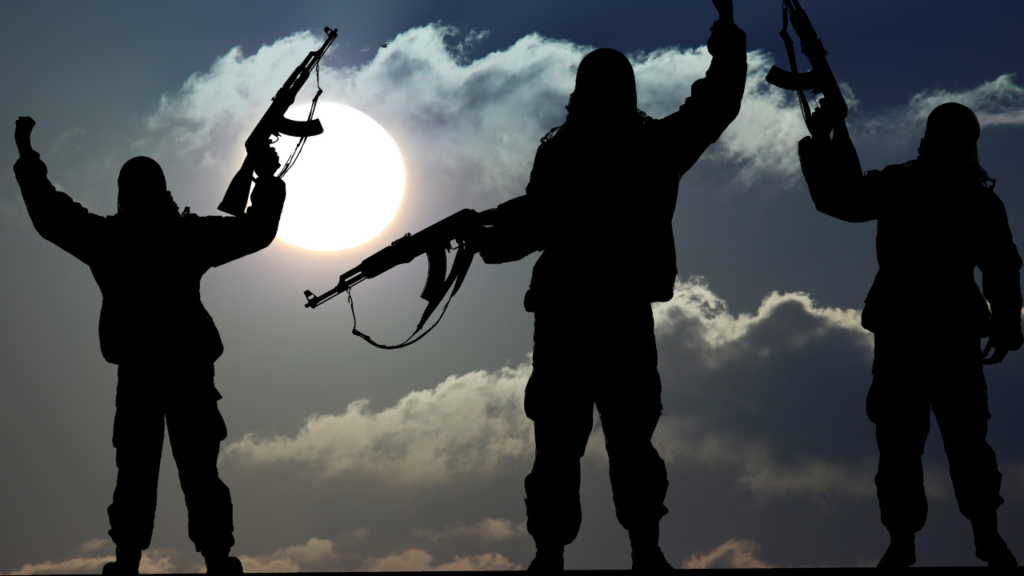
From the security perspective, sectarianism in Pakistan is rooted in a complex web of social, political and economic factors, local as well as external. The role of Saudi Arabia, Libya, Iraq, Iran and the US in supporting and sustaining the sectarian networks and madrasas throughout the last three decades has been widely acknowledged and investigated. The Government’s ideology of Strategic Depth and Jihad compel it to give jihadist and sectarian groups (which are now one and the same) a wide mandate to fight their enemies and their involvement in many other illegal activities and thus makes it difficult for the Government rein in these groups or to separate sectarianism from the wider Jihadi typology in Pakistan.

Shias have by far been the largest recipients of the sectarian violence, which has now crystallized into an absolutely one-way sectarian-cleansing of Shias in Pakistan by the extremist militants. Whatever little militant retaliation Shias could muster during the first few years has been long knocked out of them.
To put it very succinctly:
People are being taken off the buses and killed for being Shias after proper identification. (Whereas every other Pakistani in the same bus goes unscathed)
Shias are being identified and then killed in the major urban centres.
Hazaras in Quetta are being isolated and being killed merely for being Shias.
Parachinar, Tirah, Gilgit, Baltistan, Nagar etc are being sequestered and brutally attacked just because Shias live there.
In places like Hangu, Kohat, and Quetta, Shias are being pushed into ghettoization and are then preyed upon.
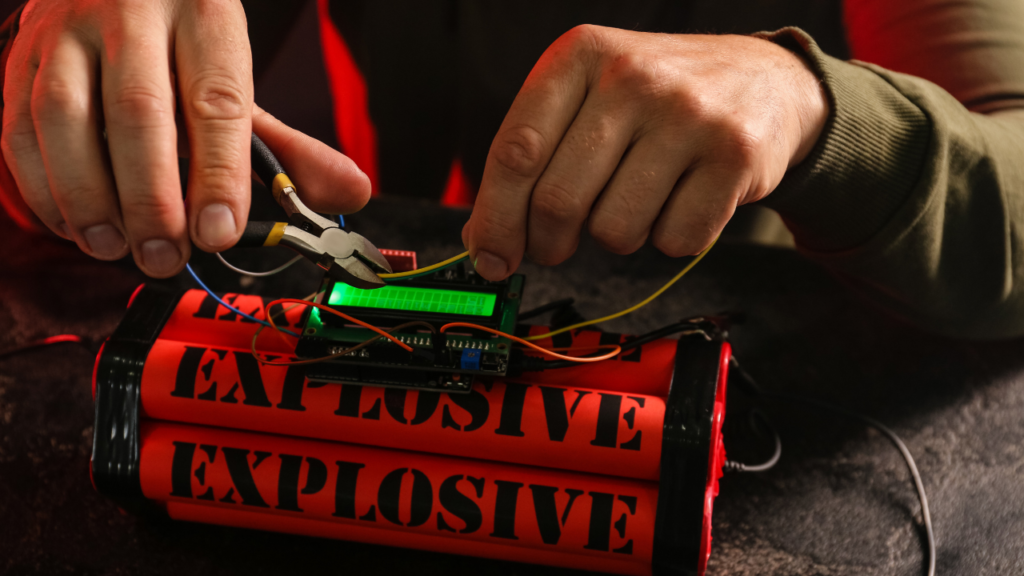
This amounts to a modern systematic cleansing of a group in Pakistan with a death toll that now surpasses that of Srebrenica Massacre recognized as genocide. The annihilation of Shias in Pakistan meets with genocide’s essential notion of complete or partial destruction of a national group as per 1948 Genocide Convention and all subsequent legal definitions of genocide. It aims to destroy a group and not just the individuals making up the group with the ultimate purpose of destroying the group’s identity to impose identity of the perpetrator. Just as the Jews and Gypsies were seen by their killers as being outside of German, Polish, and Lithuanian national groups, the Shias in Pakistan are viewed by their killers as being outside of Muslims as a group. A complete inability to identify, apprehend and bring the perpetrators to justice widens the sphere in government’s and media’s complicity in this genocide.
Shia persecution is largely an uncovered topic in the mainstream media. The wretched reality is that it is of no interest to the majority of the world. Globally, there is a severe lack of awareness on this topic as the Western media hardly discusses Shia genocide. In Pakistan, most people do not acknowledge the Shia genocide as a problem. The mainstream media in Pakistan has been silent as well. The terms like terrorism and sectarian-violence are often employed to confuse the truth of Shia-cleansing.
The killing of Shias in Pakistan epitomizes the essence of genocidal practices in partial (or complete) destruction of a national group as Lemkin understood it. It bears resemblance with the killings of Jews in the Germany of early and mid-1930s. Experience has shown that calling a case of genocide by its proper name is useful in identifying and stopping such actions. Genocide can be prevented in its early stages, but this requires decisive action. When such action is not taken, those who are indifferent to the increasing scale and intensity of violence become complicit in the exponentially increasing crimes, as we now see in Pakistan.
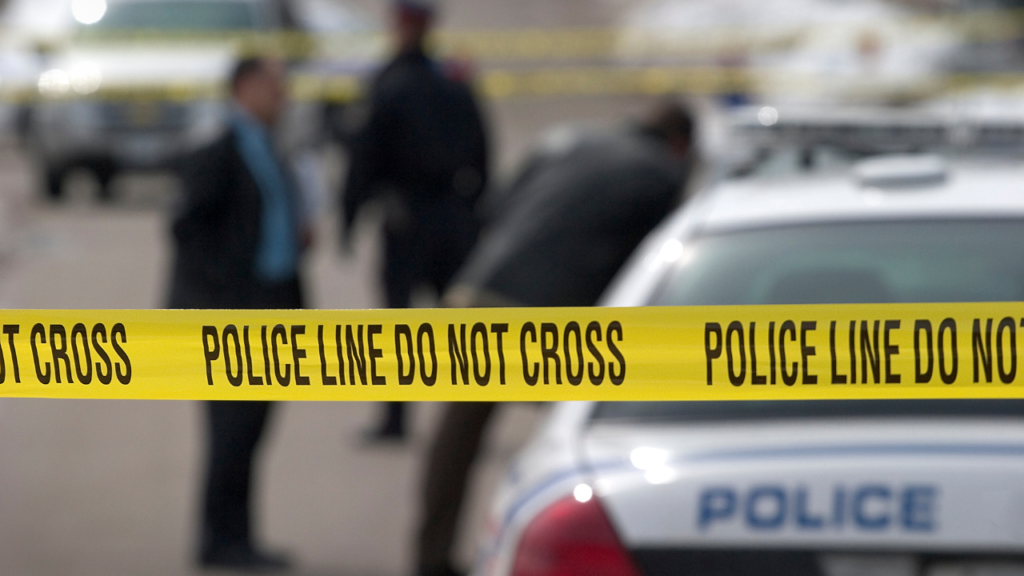
We must begin by identifying the victims as Shias being targeted as a religious national group regardless of their ethnic background. The clear intent is to destroy the whole group. The surviving members of the group must be viewed as co-victims in accordance with genocide’s definition. Following the enactment of CPPCG, most of the UN’s member states have incorporated its provisions into their respective legal architecture and all states are bound to identify and prevent a ‘Genocide’ from shaping up in their country. Hence, whether a government is accomplice, connives at Genocide, or is merely helpless to stop it does not matter.
Some of the instances cited below afford an insight into what has been going on with Shias in Pakistan. While the atrocities have clearly increased and remain on the rise, I have purposely quoted the instances from the relatively distant past in order to show that there is now a history to this Genocide. Some people in their naiveté seem to believe as if this mayhem has started all of sudden a couple of years ago. Some pretend as if this started after 9/11. Neither is true, as we can see below.
Arguably the single biggest tragedy, in over two decades of Shia’s massacre in Pakistan, occurred in April 1988 in Gilgit. In April 1988, soon after Eid ul Fitr, a Lashkar consisting of thousands of people attacked Gilgit. Starting from Mansehra, it passed through Kohistan and was organized at Chilas. It travelled for over two days but the government made no attempt to stop it and also did not, at all, interfere as the killings and rapes went on. Afterwards the government put the blame on RAW, as is usual in Pakistan. All pleas for interference to the army from Junejo’s administration fell on deaf ears. In the mayhem that occurred, more than 800 Shias were killed as per independent estimates. Independent reports also confirm hundreds of rapes. Scores of Shia villages were pillaged and burned and even livestock owned were slaughtered.

In 1986 the militants, connived at and abetted by the security forces, attacked Shias in Parachinar and Kurram Agency. Hundreds were killed. Since then Shias in Kurram Agency have constantly lived under threat and practically under siege for the past six years now. Thousands have died in Parachinar. At one time average of more than five Shias were being beheaded on a daily basis. The major incidents, with significant death tolls, have occurred in 1986, 1987, 1996, 2001, 2007, and 2012. Parachinar’s Shia tribes have suffered the most in Pakistan. Sequestered from the world and besieged by inimical enemies on all sides they have become highly impoverished and lack even critical necessities such as medicines. It is a pity that the world has largely ignored Parachinar where a generation of Shias continues to be mowed down in utter impunity. The world, in general, and the government of Pakistan, in particular, seem to have abandoned the Shias of Kurram Agency to their fate. According to independent estimates, well over two thousand Shias have been killed in Parachinar since 1986.
Other major killing fields in Pakistan include Quetta, Hangu, Kohat, Dera Ismail Khan, and Karachi; which have now, for many years, witnessed a persistent and ruthless sectarian-cleansing of Shias. For example in 1998, in Hangu, over 70 Shias were slaughtered in one day. The massacre was led by Javed Ibrahim Paracha, the sitting member of National Assembly from the area on PMLN ticket, who has been instrumental in persecuting the Shias of Hangu and Kohat over the last 20 years and is also supposed to have played a role in Bari Imam’s suicidal bombing. However, there is no longer any safe place for Shias in Pakistan. For example 22 Shias were massacred in Lahore in one instance in January 1998.
Pakistan’s then trusted allies and strategic assets Taliban conquered Mazar-e-Sharif in 1998, killed Ustad Abdul Ali Mazari, slaughtered the local population, razed houses, and raped women. Several thousand were killed and thousands of women were raped. After the siege of Bamiyan in 2001, several thousand Hazara were slaughtered and their women were raped in abundance. Both SSP and LeJ were active cohorts in these massacres.

Things in Pakistan don’t look promising as the sectarian cauldron is on the boil, being stoked into extreme temperature. While it may ebb and flow, it will remain a menace for the foreseeable future as Al Qaeda will continue to have a strong presence inside the tribal areas and the Madrassas will continue to feed the hordes of armed bigots. Jihadi militias, Taliban, Al Qaeda, and SSP group are now inextricably enmeshed in attacking Shias. Protection afforded to these groups is akin to state participation in sectarian mayhem. Time magazine recently put this incessant persecution of Shias as the single largest threat to Pakistan’s security and social fabric. Meanwhile, shall the common Pakistanis allow their fellow Shia countrymen to be sacrificed as the burnt offering on the altar of an expedient state’s obsession with India and Strategic Depth?


